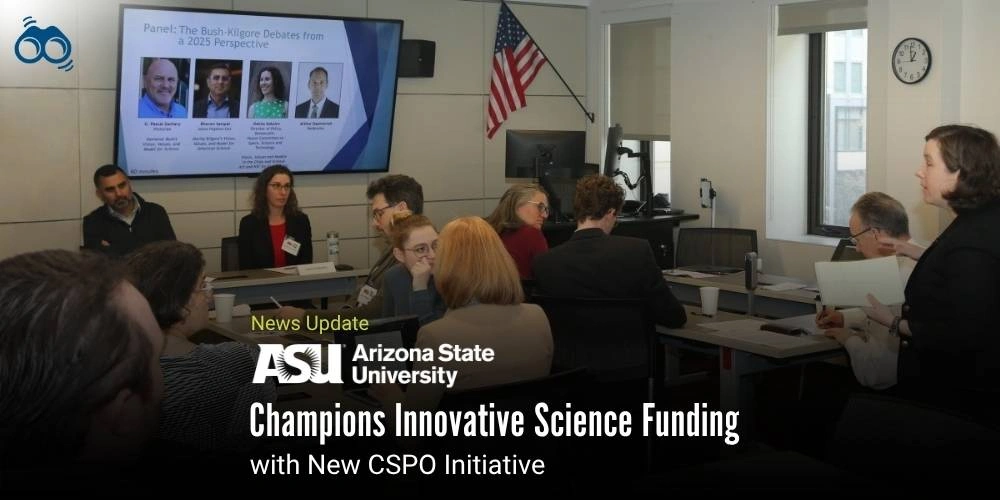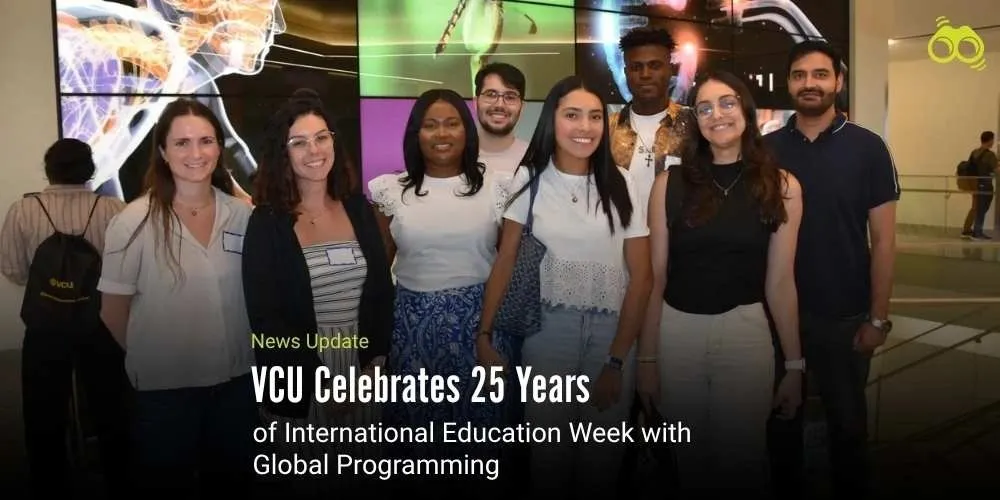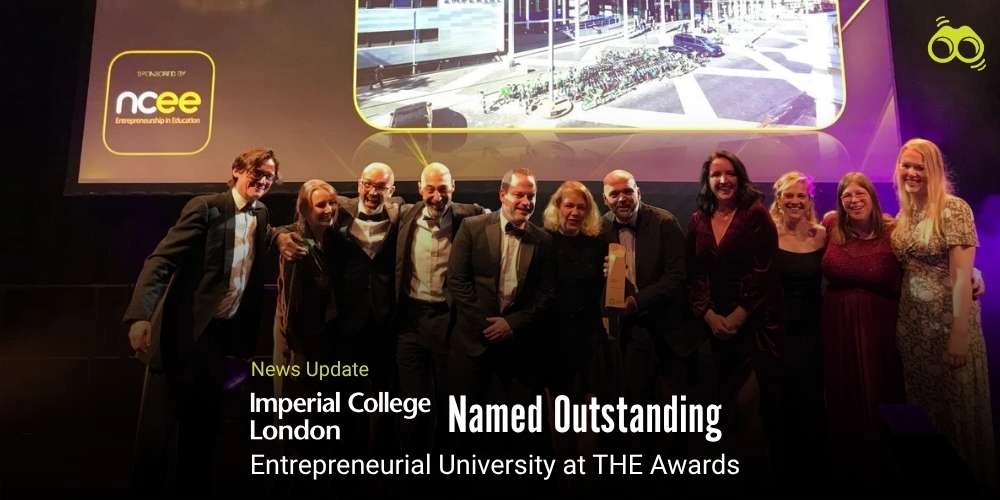ASU science funding model links innovation, regional growth and public trust in science
Workshop explores historic Bush–Kilgore divide and future of R&D funding reform
A new conversation regarding the future of science funding is unfolding in Washington, D.C. The Consortium for Science, Policy and Outcomes (CSPO) of Arizona State University is leading the charge to rethink how America invests in research and development. During opening remarks at the ASU workshop on the social contract for science, Associate Director Mahmud Farooque pronounced that there is a "crisis in science," to which ASU is proposing the New American Science conception.
Among events in ASU's science funding model initiative, the traditional science-society compact has brought together experts from federal agencies, think tanks, foundations, and universities to discuss. Observers noted that the goal of the workshop was to reimagine this compact through a science policy dialogue in Washington, D.C. that connects innovation with public trust.
The speakers contrasted the historic debate between Vannevar Bush and Senator Harley Kilgore. Bush supported basic research with scientist autonomy, Kilgore demanded outside controls, equitable distribution of funding, and public ownership of patents. Economists asserted that Bush focused on quality researchers, while Kilgore focused on monopolies and ensuring that science benefits broader economic and social needs. According to analysts, current challenges will require moving beyond this historical divide to construct new research and development funding reforms.
The discussion then turned to current policy debates. Dahlia Sokolov, policy director for the House Committee on Science, Space and Technology, went on to outline how recent legislation, such as the NSF for the Future Act, aims to expand funding and create new directorates. She stressed that the geographic distribution of investment is crucial, as building regional capacity for science innovation strengthens local economies and workforce development.
CSPO director Arthur Daemmrich traced the evolution of government involvement in science funding. Noting that earlier investment in the United States supported the building of infrastructure, such as canals and railways, the government today aids mainly in the areas of oversight and efficiency. Learning from the past points toward a chronic lack of focus on science funding reform in the United States, which the consortium will begin addressing through this new series.
The ASU Centre starts launching the "Rethinking America's Social Compact with Science" series, which will host expert dialogues with agencies, research institutes, and think tanks to consider how the role of universities might be strengthened in national research and development policy and the conversion of public investment to national benefits. Besides, CSPO plans on community-based conversations within Arizona, West Virginia, and Massachusetts to ensure that multiple voices participate in shaping the future of democratic science funding. As explained by Farooque, the first step is listening, followed by communicating the way forward. Observers concluded that this initiative shows how ASU is actively reshaping the U.S. science funding mechanism, branching interdisciplinary science policy into innovation, regional growth, and public trust.
Editor’s Note:
The Consortium for Science, Policy, and Outcomes at Arizona State University (ASU) has ushered in a national debate on what the future of scientific funding would look like in the U.S. It has, therefore, brought to the fore the fact that the traditional bargain between science and society, one where research is funded by public monies and where, in exchange, it is to deliver benefits to society, is under a good deal of pressure. During the first ASU workshop on social contract for science in Washington, D.C., Associate Director Mahmud Farooque stated, "There has emerged a crisis in science," while introducing the New American Science model, which sought to answer such questions. Debating the past, speakers recalled Vannevar Bush's advocacy of the autonomy of scientists in basic research, and Senator Harley Kilgore's front for external control, equitable distribution of funding, and public ownership of patents. Analysts' consensus tells that although both norms formed the foundational ethos of the science-society accord, new models of research-development funding reform should be constructed to meet today's challenges. Policies under focus also included current public policy, exploitation of which Dahlia Sokolov from the House Committee on Science, Space and Technology underscored as important in expanding sources of funding by enacting laws like the NSF for the Future Act and building regional capabilities for science innovation. CSPO Director Arthur Daemmrich tracked the historical development of government science funding emphasis-for example, canals and railroads-built to increasingly narrow foci of oversight and efficiency. He also reiterated that the recurring gaps in science funding reform within the United States must now be addressed.
Skoobuzz underlines that through the "Rethinking America's Social Compact with Science" series, ASU will host expert dialogues and community-based conversations in Arizona, West Virginia, and Massachusetts. That revealed how ASU is transforming the U.S. science funding system to link interdisciplinary science policy with innovation, regional economy, and public trust.
FAQs
Q1. What is the ASU science funding model initiative?
The initiative, led by Arizona State University’s Consortium for Science, Policy and Outcomes (CSPO), aims to rethink how the United States invests in research and development. It focuses on renewing the traditional science-society compact, where public funding supports research in exchange for social benefits.
Q2. What was discussed at the ASU workshop on the social contract for science?
The first workshop in Washington, D.C., brought together leaders from government, universities, think tanks and foundations. Participants engaged in a science policy dialogue in Washington, D.C. to explore how research and development can continue to serve the public interest while building public trust in science.
Q3. What is ASU’s “New American Science” model?
Associate Director Mahmud Farooque explained that ASU is proposing a New American Science model to address what he described as a “crisis in science.” The model seeks to modernise funding structures and ensure that research delivers broad social and economic value.
Q4. What historic debate was revisited during the workshop?
Speakers contrasted the views of Vannevar Bush, who supported autonomy for scientists and basic research, with Senator Harley Kilgore, who called for external controls, equitable funding distribution and public ownership of patents. Analysts agreed that today’s challenges require moving beyond this Bush–Kilgore divide to design new research and development funding reforms.
Q5. How does current policy address science funding reform in the United States?
Dahlia Sokolov from the House Committee on Science, Space and Technology highlighted legislation such as the NSF for the Future Act, which aims to expand funding and create new directorates. She stressed the importance of building regional capacity for science innovation, as investment in local hubs strengthens economies and workforces.
Q6. What role did CSPO Director Arthur Daemmrich highlight for the government in science funding?
Arthur Daemmrich traced how government involvement has evolved from funding infrastructure projects like canals and railways to focusing more on oversight and efficiency. He noted that recurring gaps in science funding reform in the United States must now be addressed.
Q7. What is the “Rethinking America’s Social Compact with Science” series?
The series, launched by ASU, will host expert dialogues with agencies, research institutes, and think tanks. It will also include community-based conversations in Arizona, West Virginia and Massachusetts to ensure diverse voices shape the future of democratic science funding.
Q8. How does ASU plan to move the initiative forward?
Mahmud Farooque explained that the first step is listening, followed by sharing outcomes to identify possible ways forward. Observers concluded that the initiative shows how ASU is reshaping the U.S. science funding system, linking interdisciplinary science policy with innovation, regional growth and public trust.














0 Comments (Please Login To Continue)